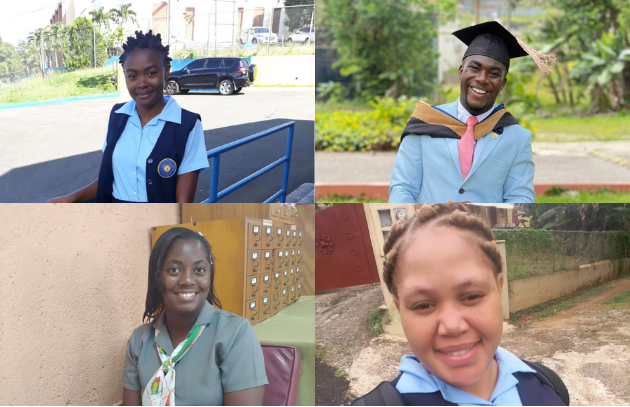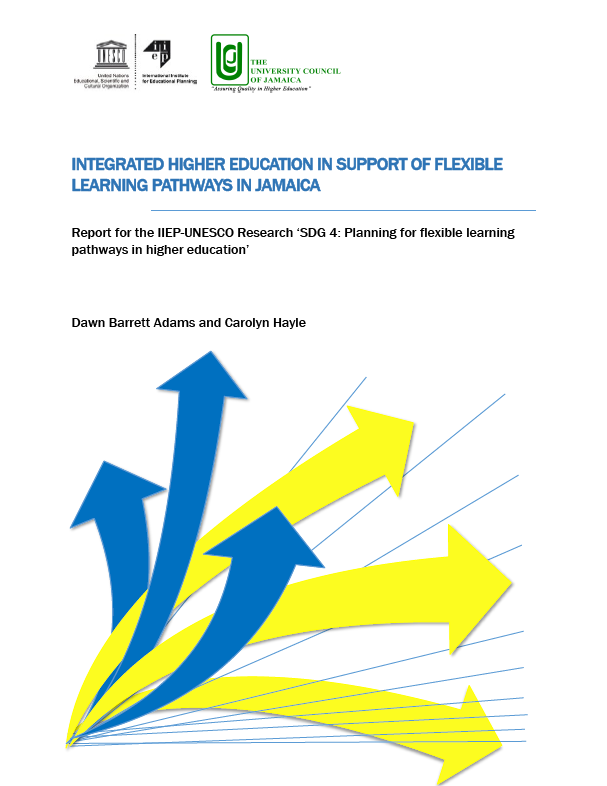jamaica_collage.png

A teacher, a restaurant owner, a social worker – these are all career tracks of young students in Jamaica who are benefitting from flexible learning pathways. Until now, the last two years of secondary education – grades 12 and 13 – were only offered in traditional high schools. Now, new research from the University Council of Jamaica, in collaboration with IIEP, is informing policy shifts to mandate seven years of high school – instead of five – for all students. Read on to hear how this is helping students reach their dreams.
When Oriana Morris finished Grade 11 at Ocho Rios High School she did not think she would attend college. “I was going to forfeit school,” she says. However, her plans took a turn after a teacher told her that the local Moneague College had the Career Advancement Programme (CAP) – a two-year government initiative that has made Technical and Vocational Education and Training (TVET) an acceptable pathway to higher education.
“My dream is to start my own restaurant,” says Morris. Through the CAP, Morris was able to continue her educational journey and benefit from a scholarship to pursue an Occupational Associate Degree (OAD) where she would study restaurant operations and learn how to make her own business plan.
Higher schooler Kadiann Edwards-Pryce dreamt of becoming a teacher. However, she did not think it would ever be possible. “Because of my humble beginnings and my background, I never really saw myself going to University,” she says. However, after receiving a scholarship to pursue the OAD and completing the programme, she is now obtaining a degree in teacher education.
“Because of my humble beginnings and my background, I never really saw myself going to University."
Aspiring social worker, Tajah Eccleston, also benefitted from the CAP and OAD. He recently graduated with an Associate Degree from the Northern Caribbean University in Business Process Outsourcing – an industry-specific training at the tertiary level. While COVID-19 slowed his job search, he is now applying to jobs while helping youth read in his community. “The Associate Degree has opened so many doors,” he says.
CAP graduate Sashana Williams agrees. When she left high school, she did not know what to do until she learned about CAP. “When I heard the government would be funding the programme, I said why not try it out,” she says, adding that today’s students are lucky to all be able to automatically enter the extended secondary school programme.
Establishing Grades 12 and 13 in all high schools
These stories resonate with many other Grade 11 students in Jamaica. Previously, only certain high schools included Grades 12 and 13. In fact, only 35% of the average 40,000 Jamaican students who completed Grade 11 each year would transition into sixth form – the two final years of high school for students aged 16 to 18 who are preparing for the Caribbean Secondary Education Certificate. This meant that many students finished five years of secondary school without any formal certification to enter the labour market or higher education.
This is now changing as the Ministry of Education, Youth, and Information integrates seven years of secondary education into all public secondary schools, as well as 24 private schools and 10 public tertiary institutions by the start of the 2022 academic year.
Through this reform the Hon Fayval Williams, Minister of Education, Youth, and Information, says, “Each student has the opportunity to actualize his/her fullest potential, by gaining certification for entry into the labour market or transitioning into higher education.”
Building policies based on evidence
Behind this major policy shift is research out of the University Council of Jamaica. In their report, Integrated Higher Education in Support of Flexible Learning Pathways in Jamaica, the co-authors investigated the effectiveness of flexible learning pathways currently being pursued by the Government of Jamaica. The goal was to have a better understanding of how policies serve disadvantaged learners and to build policy recommendations to broaden access to equitable and quality higher education and lifelong learning for all.
The research is part of IIEP’s global study on SDG-4 Planning for flexible learning pathways, to support countries on the path towards achieving Sustainable Development Goal 4. In Jamaica’s case, the research revealed how programmes like the CAP and OAD are giving students new opportunities to transition between TVET and higher education and pursue alternative pathways to achieve their goals.
In addition, the research showed how the National Qualifications Framework for Jamaica (NQF-J) serves as an important equalizer as it helps individuals enter, progress through, and complete a degree while incorporating all types of prior learning. The study also highlighted certain aspects where more attention is needed, such as how to mainstream CAP and OAD in high schools and how to make the NQF-J better known so that it is used more effectively for credit transfers and recognition of prior learning.
“Extending high school to seven years for all students is key to ensuring greater equity, quality, and inclusiveness in the higher education sector. It’s a real game changer,” says co-author Dawn Barrett Adams and UCJ’s Accreditation Officer. “When you give young people two extra years it increases the opportunity for them to gain the required certification to move into the labour market or into higher education.”
Co-author Carolyn Hayle, researcher, and former Chair of the UCJ, says the alternate pathways will help Jamaica with its goal of increasing enrolment in post-secondary and higher education. “It will become a more articulated and seamless education system. It will open doors and options for students,” she says.
 | Some students like Geovaughni Green are already benefitting from the reform. Through the new pathways, he is studying restaurant operations and eventually wants to seek employment abroad. “I see [the reform] as an opportunity to get qualifications to enter the work world.” |
In the coming years, Jamaica would like to see 80% of all potential learners enrolling in higher education “Participation is probably around 60% now,” remarked the Minister of Education during the virtual launch of the research. “I would like to push that number even higher.”






